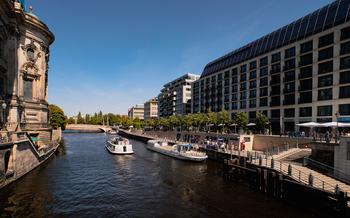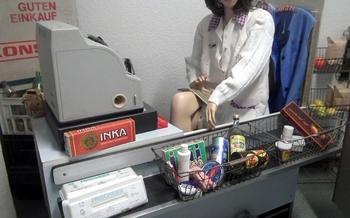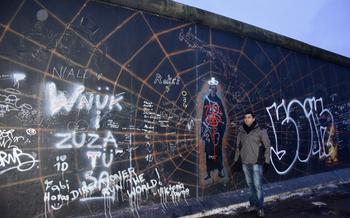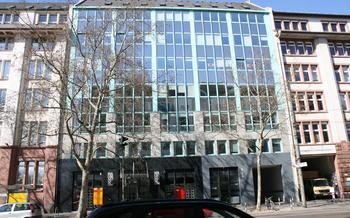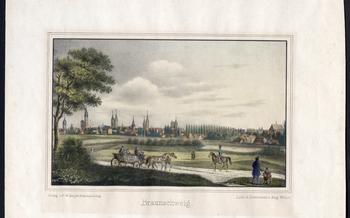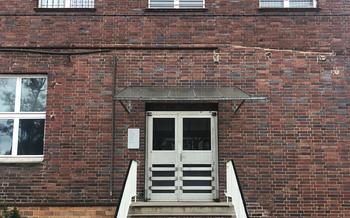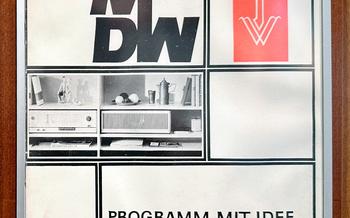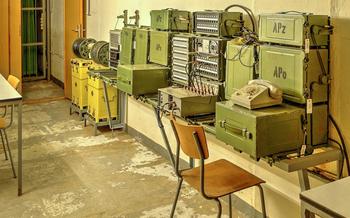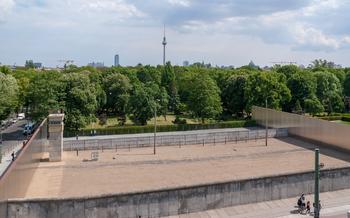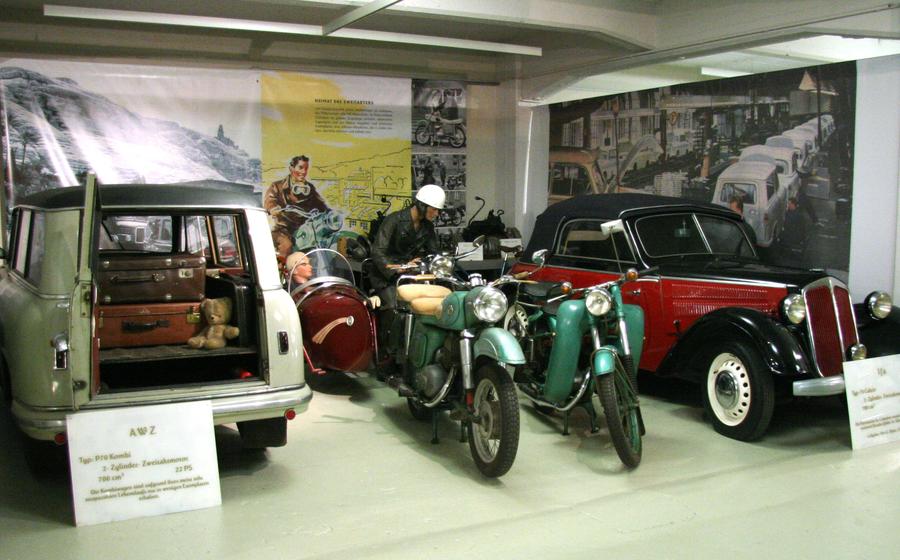
DDR Museum
- The DDR Museum: A Glimpse into East Germany's Past
- Exploring the Museum's Unique Artifacts
- Interactive Experiences at the DDR Museum
- Understanding the Political and Social Context
- The Legacy of the GDR in Modern Germany
- Must-See Exhibits for History Buffs
- Unique Photo Opportunities at the Museum
- Interactive Workshops and Activities
- The Museum Shop for GDR-Themed Souvenirs
- Exploring the Museum's Surroundings
- The DDR Museum for School Groups
- Accessibility and Facilities at the Museum
- The Museum's Contribution to Historical Education
- Insider Tip: Hidden Gems of the Museum
The DDR Museum: A Glimpse into East Germany's Past
Immerse yourself in the captivating history of East Germany at the DDR Museum in Chemnitz, a vibrant city located in the heart of Saxony. This unique museum offers a profound journey through the German Democratic Republic (GDR), showcasing everyday life, political ideologies, and the impact of the Berlin Wall.
Situated in a former department store on Straße der Nationen, the DDR Museum is conveniently accessible by public transportation. Its prime location in the city center makes it an ideal starting point for exploring Chemnitz's rich cultural heritage.
The museum's thematic exhibitions and interactive displays provide an immersive experience, transporting visitors back in time to the GDR era. From authentic artifacts and propaganda posters to virtual reality simulations, the DDR Museum offers a comprehensive exploration of East German history and culture.
Exploring the Museum's Unique Artifacts
The DDR Museum showcases a vast collection of artifacts that provide a tangible glimpse into daily life in East Germany. From mundane household items to iconic symbols of the regime, each exhibit holds a story waiting to be told.
One of the most striking aspects of the museum's collection is the sheer variety of everyday objects on display. Visitors can examine everything from clothing and furniture to toys and kitchenware, all of which offer insights into the material culture of the GDR. These seemingly ordinary items become poignant reminders of the challenges and triumphs of life in a socialist society.
The museum also features a number of exhibits that explore the symbolism and propaganda of the GDR regime. Visitors can see posters, flags, and other propaganda materials that were used to promote the socialist ideology and glorify the achievements of the state. These exhibits provide a deeper understanding of the ways in which the regime sought to shape public opinion and maintain control.
A particularly significant exhibit at the DDR Museum is the Stasi exhibit. The Stasi, or secret police, was one of the most feared and oppressive institutions in East Germany. The exhibit features a replica of a Stasi prison cell, as well as a variety of surveillance equipment and documents. Visitors can learn about the Stasi's methods of operation and the devastating impact it had on the lives of countless individuals.
Interactive Experiences at the DDR Museum
The DDR Museum offers interactive experiences that take visitors beyond the confines of traditional exhibitions. One highlight is the virtual reality simulation that allows visitors to experience a day in the life of a GDR citizen. Through this immersive experience, visitors can explore the streets of East Berlin, shop for groceries, and even attend a political rally.
Another interactive element is the opportunity to handle and experience original artifacts from the GDR era. Visitors can try on Stasi uniforms, sit in a Trabant car, and even use a rotary dial telephone. These hands-on experiences provide a deeper understanding of what life was like in East Germany.
The museum also features interactive games and activities that engage visitors in a fun and educational way. Visitors can test their knowledge of GDR history through quizzes and games, or participate in interactive workshops that explore different aspects of life in East Germany. These activities not only entertain but also deepen visitors' understanding of the GDR's political and social context.
Understanding the Political and Social Context
The DDR Museum provides a comprehensive overview of the political and social context of the GDR. Visitors can learn about the historical events leading to the formation of the GDR in 1949, the structure of its political system, and the key figures who shaped its history. The museum also examines the GDR's economic and social policies, including its ambitious industrialization drive, the collectivization of agriculture, and the creation of a comprehensive social welfare system.
A particularly poignant exhibit focuses on the impact of the Berlin Wall, which physically and symbolically divided Germany for over 28 years. Visitors can see a replica of the wall, learn about the lives of those who lived in its shadow, and understand the significance of its fall in 1989, which marked the beginning of the end of the GDR and the reunification of Germany.
The Legacy of the GDR in Modern Germany
The existence of the GDR had a profound impact on the unification of Germany in 1990. The process of integrating the GDR into the Federal Republic was complex and challenging, involving political, economic, and social adjustments. The legacy of the GDR continues to influence modern Germany in various ways.
Culturally, the GDR left its mark on the country's artistic and intellectual landscape. Artists, writers, and filmmakers who emerged from the GDR brought unique perspectives and experiences to the unified Germany, enriching its cultural fabric. The GDR's emphasis on social welfare and equality also influenced the development of social policies in the reunited country.
Economically, the integration of the GDR's planned economy into the market economy of West Germany posed significant challenges. The process involved restructuring industries, privatizing state-owned enterprises, and addressing unemployment and economic disparities. The legacy of the GDR's economic system can still be seen in the regional disparities that persist in Germany today.
Socially, the unification of Germany brought together people with different life experiences, values, and perspectives. The process of reconciling these differences and fostering a sense of common identity has been ongoing. The GDR's history, with its emphasis on collectivism and state control, continues to be a subject of debate and reflection in modern Germany.
Must-See Exhibits for History Buffs
The DDR Museum boasts a captivating array of exhibits that transport visitors back in time to the era of the German Democratic Republic. Among the must-see highlights is the iconic Trabant car, a symbol of GDR culture. This unassuming yet ubiquitous vehicle played a crucial role in shaping the everyday lives of East Germans, and visitors can marvel at its unique design and learn about its significance in GDR society.
Another must-see exhibit is the "Palace of the Republic," a monumental building that once served as the seat of the GDR's parliament. Through interactive displays and historical artifacts, visitors can explore the grandeur and symbolism of this iconic structure, which has been meticulously recreated within the museum.
For a glimpse into the ordinary lives of GDR citizens, the "Everyday Life in the GDR" exhibit offers a fascinating journey into the domestic sphere. From typical furnishings and household appliances to fashion trends and leisure activities, this exhibit provides a comprehensive insight into the daily realities of life in East Germany.
Unique Photo Opportunities at the Museum
The DDR Museum offers a treasure trove of photographic opportunities that transport visitors back in time to the era of East Germany. Step into recreated iconic GDR landmarks, such as the Alexanderplatz or the Palace of the Republic, and capture the essence of these historical sites. Don't miss the chance to dress up in authentic GDR-era clothing and immerse yourself in the past. Strike a pose in front of a Trabant car, a symbol of East German ingenuity, or capture the essence of everyday life in the GDR at the dedicated exhibit. Interactive photo stations throughout the museum provide a fun and engaging way to document your visit and create lasting memories.
Interactive Workshops and Activities
The DDR Museum offers a variety of interactive workshops and activities that allow visitors to engage with GDR history and culture in a hands-on way. These workshops are suitable for both children and adults and provide a deeper understanding of the everyday life of people in East Germany.
One popular workshop is the "Stasi Surveillance Workshop", where participants can learn about the methods used by the Stasi, the secret police of the GDR. They can handle original Stasi surveillance equipment, decode secret messages, and even try their hand at breaking codes.
Another popular workshop is the "Everyday Life in the GDR Workshop", where participants can experience what it was like to live in East Germany. They can try on GDR clothing, cook and eat typical GDR dishes, and learn about the challenges and hardships faced by ordinary people.
The museum also offers a variety of educational activities related to GDR history and culture. These activities include lectures, film screenings, and discussions. Visitors can learn about the political and economic system of the GDR, the role of the Stasi, and the impact of the Berlin Wall on daily life.
These interactive workshops and activities are a great way to learn more about the GDR and its legacy. They provide a unique and engaging experience that will stay with visitors long after their visit to the DDR Museum.
The Museum Shop for GDR-Themed Souvenirs
The DDR Museum's shop is a treasure trove of authentic GDR products and memorabilia, offering visitors a chance to take a piece of history home. Browse through a variety of GDR-themed souvenirs, from iconic products like the Trabant car model to everyday items such as clothing, toys, and household goods. Discover books and publications that delve deep into the history and culture of the GDR, providing insights into the daily lives of its citizens. For history enthusiasts, the museum shop is a must-visit, offering unique souvenirs that serve as tangible reminders of this fascinating era.
Exploring the Museum's Surroundings
Chemnitz, the vibrant city where the DDR Museum resides, offers a wealth of attractions for visitors to delve deeper into the region's history and culture. Just a short stroll from the museum, the Karl Marx Monument, an iconic symbol of the city's socialist past, stands proudly. Take some time to admire its grandeur and learn about the life and legacy of Karl Marx, the renowned philosopher and economist.
Chemnitz also boasts an impressive array of museums, each showcasing a unique aspect of the city's heritage. The Industriemuseum Chemnitz, housed in a former textile factory, offers insights into the city's industrial past, while the Kunstsammlungen Chemnitz boasts a collection of modern and contemporary art.
For a culinary journey into GDR-inspired cuisine, head to Gaststätte Chemnitzer Hof, a traditional restaurant serving authentic dishes from the era. Indulge in hearty meals that evoke the flavors of the past as you soak up the ambiance of this charming establishment.
To extend your stay in Chemnitz, consider exploring the Schlossteich Park, a beautiful green oasis located near the city center. Take a leisurely stroll along the tranquil waters of the Schlossteich lake, admire the picturesque scenery, and unwind amidst nature's beauty.
The DDR Museum for School Groups
The DDR Museum offers a wealth of educational resources and programs tailored specifically for school groups. Teachers can access a range of materials, including lesson plans, worksheets, and multimedia resources, to enhance their students' understanding of GDR history. Guided tours can be customized to align with specific curriculum needs, providing students with an immersive and interactive learning experience. Through interactive activities, students can engage with GDR artifacts, role-play scenarios, and explore the museum's virtual reality simulations, bringing the past to life in a captivating way. The DDR Museum serves as an invaluable resource for educators seeking to foster a deeper understanding of this significant period in German history.
Accessibility and Facilities at the Museum
The DDR Museum is committed to ensuring that all visitors have a comfortable and enjoyable experience. Wheelchair accessibility is a priority, with ramps and elevators throughout the museum. Visitors with disabilities can also take advantage of reserved parking spaces, accessible restrooms, and assistance from museum staff.
Information desks are located throughout the museum, providing multilingual assistance to visitors from all over the world. Rest areas and a cloakroom are also available for visitors' convenience.
The museum's website provides detailed information about accessibility and facilities, including a virtual tour that allows visitors to explore the museum remotely.
The Museum's Contribution to Historical Education
The DDR Museum serves as a vital platform for preserving and sharing the history of East Germany, ensuring that the experiences, struggles, and achievements of this era are not forgotten. Through its comprehensive collection of artifacts, immersive exhibitions, and educational programs, the museum plays a crucial role in fostering understanding and dialogue about the GDR's past.
The museum's commitment to historical education extends beyond its walls, with outreach programs and initiatives that reach a wide audience. Workshops, lectures, and online resources provide opportunities for people of all ages to engage with GDR history, explore its complexities, and gain a deeper appreciation for the impact it has had on modern Germany.
By preserving and sharing the stories of the GDR, the DDR Museum contributes to a more comprehensive understanding of German history and helps to ensure that the lessons of the past are not forgotten. It is a place of remembrance, reflection, and learning, inspiring visitors to think critically about the past and its relevance to the present.
Insider Tip: Hidden Gems of the Museum
Delve deeper into the DDR Museum's treasures with our insider tips. Discover secret exhibits tucked away from the main galleries, showcasing hidden aspects of GDR life. Engage with knowledgeable museum staff who share unique perspectives and insights, bringing the past to life. Uncover the hidden stories behind everyday objects, revealing the complexities and contradictions of life in East Germany. Explore the museum's archives, where you can uncover fascinating documents, photographs, and personal accounts that provide a glimpse into the lives of ordinary citizens. With a keen eye and a curious mind, you'll uncover the hidden gems that make the DDR Museum a truly immersive and unforgettable experience.
